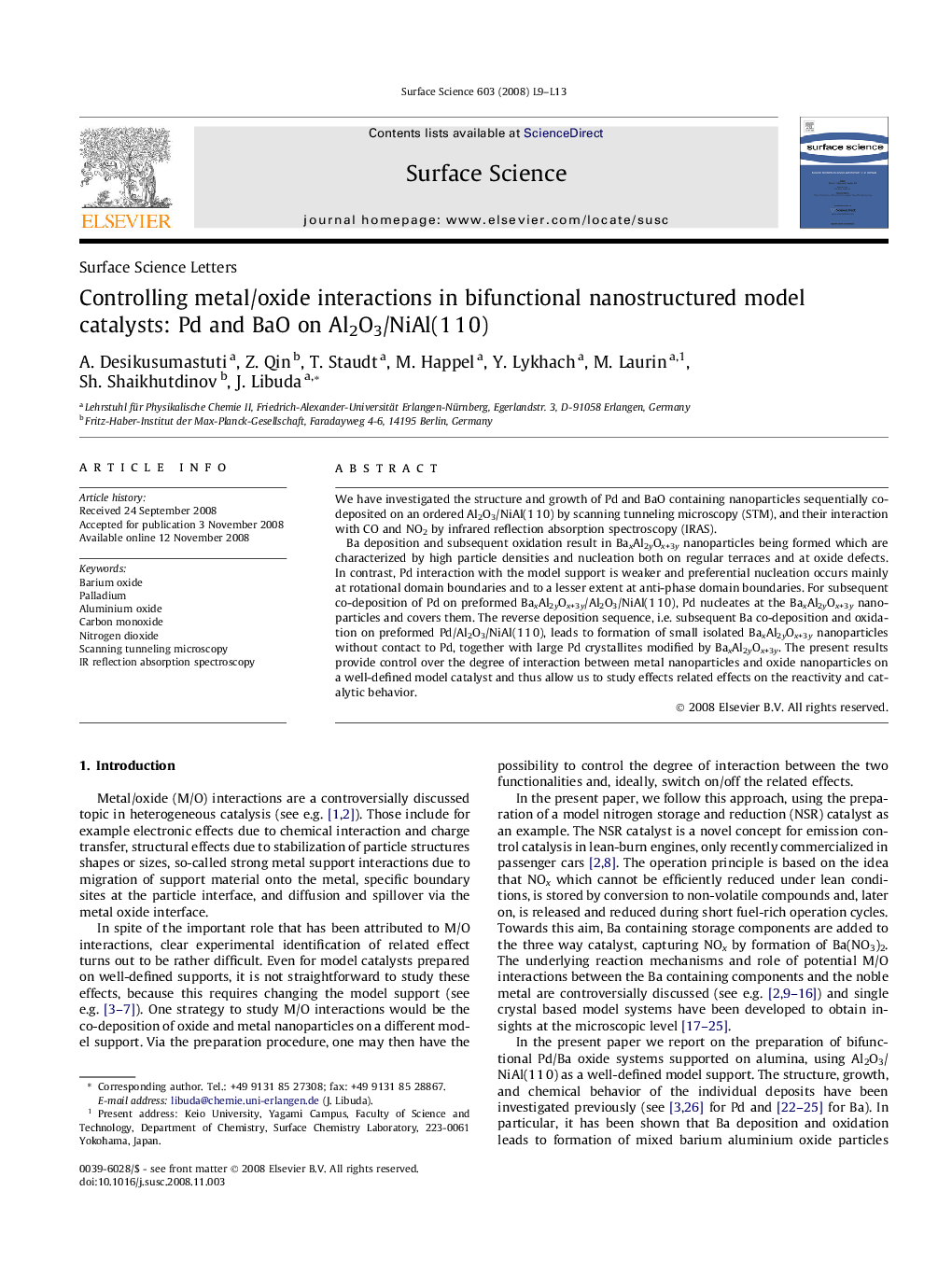| Article ID | Journal | Published Year | Pages | File Type |
|---|---|---|---|---|
| 5424747 | Surface Science | 2009 | 5 Pages |
We have investigated the structure and growth of Pd and BaO containing nanoparticles sequentially co-deposited on an ordered Al2O3/NiAl(1Â 1Â 0) by scanning tunneling microscopy (STM), and their interaction with CO and NO2 by infrared reflection absorption spectroscopy (IRAS).Ba deposition and subsequent oxidation result in BaxAl2yOx+3y nanoparticles being formed which are characterized by high particle densities and nucleation both on regular terraces and at oxide defects. In contrast, Pd interaction with the model support is weaker and preferential nucleation occurs mainly at rotational domain boundaries and to a lesser extent at anti-phase domain boundaries. For subsequent co-deposition of Pd on preformed BaxAl2yOx+3y/Al2O3/NiAl(1Â 1Â 0), Pd nucleates at the BaxAl2yOx+3y nanoparticles and covers them. The reverse deposition sequence, i.e. subsequent Ba co-deposition and oxidation on preformed Pd/Al2O3/NiAl(1Â 1Â 0), leads to formation of small isolated BaxAl2yOx+3y nanoparticles without contact to Pd, together with large Pd crystallites modified by BaxAl2yOx+3y. The present results provide control over the degree of interaction between metal nanoparticles and oxide nanoparticles on a well-defined model catalyst and thus allow us to study effects related effects on the reactivity and catalytic behavior.
